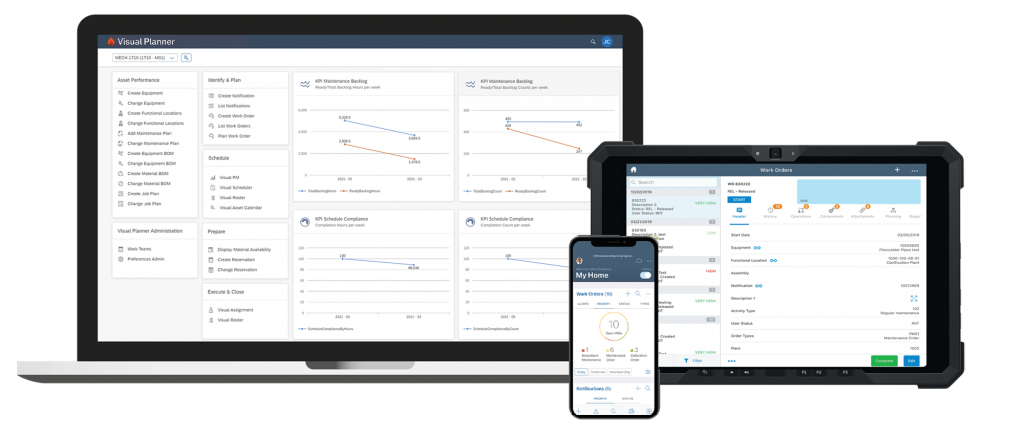Achieving operational excellence is what efficient organizations are striving for, especially in times of economic crisis like the one we are undergoing.
The five main elements of operational excellence are:
- Asset Uptime
- Asset Utilization;
- Production rates (performance);
- Level of compliance or quality; and
- Lowest production costs.
The Maintenance Excellence program is one of the key factors of operational excellence. It aims particularly at putting in place effective maintenance tactics, practices and processes to ensure that equipment is available when needed and performs as expected.
But what is operational excellence exactly? Is it a philosophy that enables problem solving or is it a mindset every employee should foster to enable continuous improvement within an organization? Well, operational excellence is really all that. It is a path towards applying the right tools to the right business processes. When this happens successfully, the resulting work culture will inevitably promote both employee autonomy and involvement in the workplace.
To achieve Operational Excellence, here are 10 core principles that should be observed at all levels of your organization.
| Rule Number 1 – Respect for Everyone
One of the guiding principles of operational excellence is respect and involvement of the individual. Every employee within a company has value and potential, and that is why everyone deserves respect. Having respect for others is all well and good, but it must still be demonstrated. One of the most effective methods to show respect is to involve employees in all improvement initiatives undertaken within their department. For example, establishing a system where employees can provide their feedback and suggestions will increase employee commitment, as they will see themselves as an integral part of the change initiative in their own organization. A good Lean Management solution will allow your employees to develop improvement plans that promote productivity and well-being within the company.
| Rule Number 2 – Lead with Humility
Improvement is a matter of recognizing one’s shortcomings and seeking to become a better person. Humility therefore implies a willingness to listen and to accept everyone’s suggestions, regardless of that person’s position or status within the company.
| Rule Number 3 – Strive for Perfection
This is a difficult principle to integrate into the organizational culture, as it often generates resistance. Although perfection may seem unattainable, that doesn’t mean you can’t strive for it.
| Rule Number 4 – Embrace Scientific Thinking
Operational excellence is the result of experimentation, pilot phases and continuous learning. It is therefore necessary to understand what works and what does not work, in order to systematically explore new ideas. Implementing a participatory improvement system within your company will encourage your employees to do the same without fear of failure.
| Rule Number 5 – Implement Effective Business Processes for Profitable Change
There is often a tendency to blame others when things go wrong. In many cases, the problem resides in the lack of business processes or non-application of these processes. It is not related to the person as such. When a problem arises, assess where it occurs in the process. Once the problem has been identified, you can make the necessary adjustments to achieve the desired results.
| Rule Number 6 – Ensure Quality at the Source
The quality of a product or service is measured when all the elements that are part of the process are performed correctly. For instance, it can be useful to organize the work areas in such a way that potential problems become immediately visible. When an error occurs, it is important to stop work immediately and fix the problem before proceeding. In addition, the use of a digital collaborative solution, allowing the identification of problems in the form of an action plan, will ensure consistent quality and an efficient Lean approach.
| Rule Number 7 – Think in a Systematic Way
Each department in a company is interconnected and works together. To make the best business decisions, it is important to understand what constitutes the relationship between each of these parties. By having a broad view of your organization, you will be able to remove the barriers that prevent ideation and communication.
| Rule Number 8 – Establish Constant Communication
From the first day on the job, every new employee should understand what the organization’s business objectives are, as well as the mission statement. Each employee must define the course of action to accomplish his or her mission to achieve the organization’s vision. Knowing this will help employees adjust their own actions and objectives to those of the company.
| Rule Number 9 – Creating Value for the Customer
It is obvious that a company that stops providing value to the customer is doomed to failure. That is why you need to understand the customer’s needs, the value being the customer’s willingness to pay! Nothing more and nothing less.
| Rule Number 10 – Avoid Waste
By using Lean Manufacturing tools on your handling and storage techniques, for example, you can significantly improve operational performance and reduce overall costs.
Achieve Maintenance Excellence
Operational excellence is the ultimate goal for all organizations seeking continuous improvement. Executing projects and using continuous improvement tools are a good starting point, but they alone are not enough to create lasting change. Lasting change can only occur when the principles of operational excellence are understood and deeply rooted in an organization’s culture.


